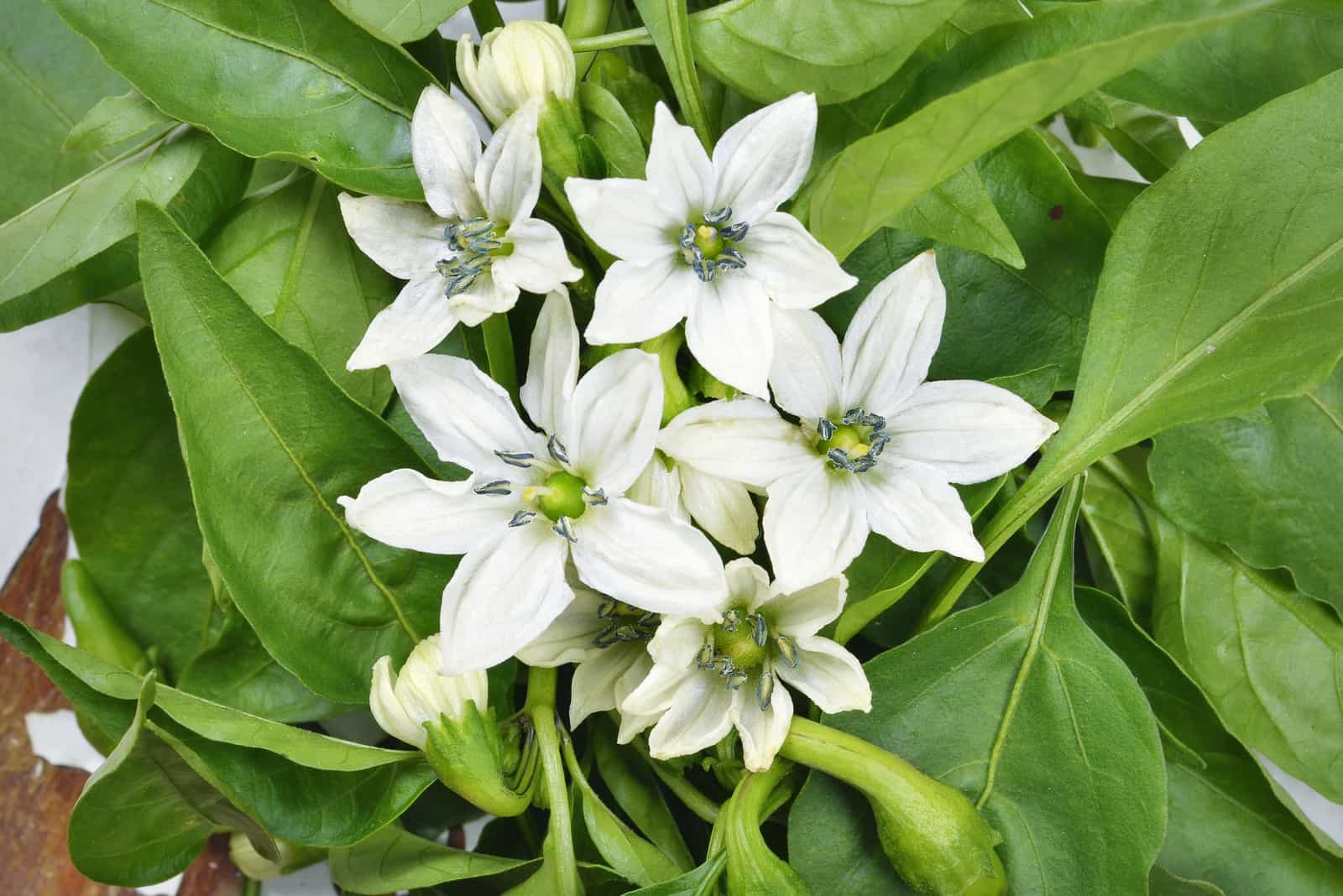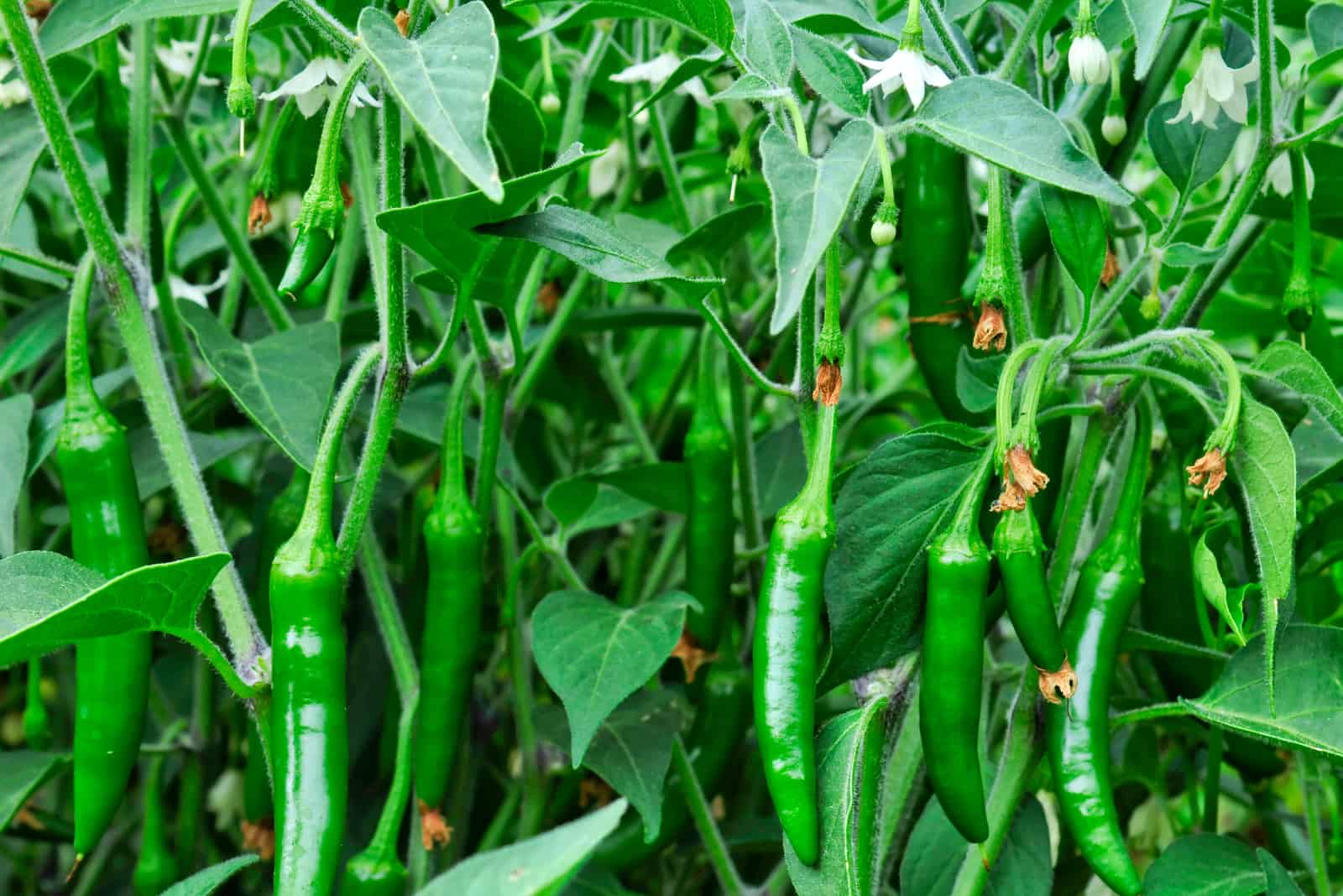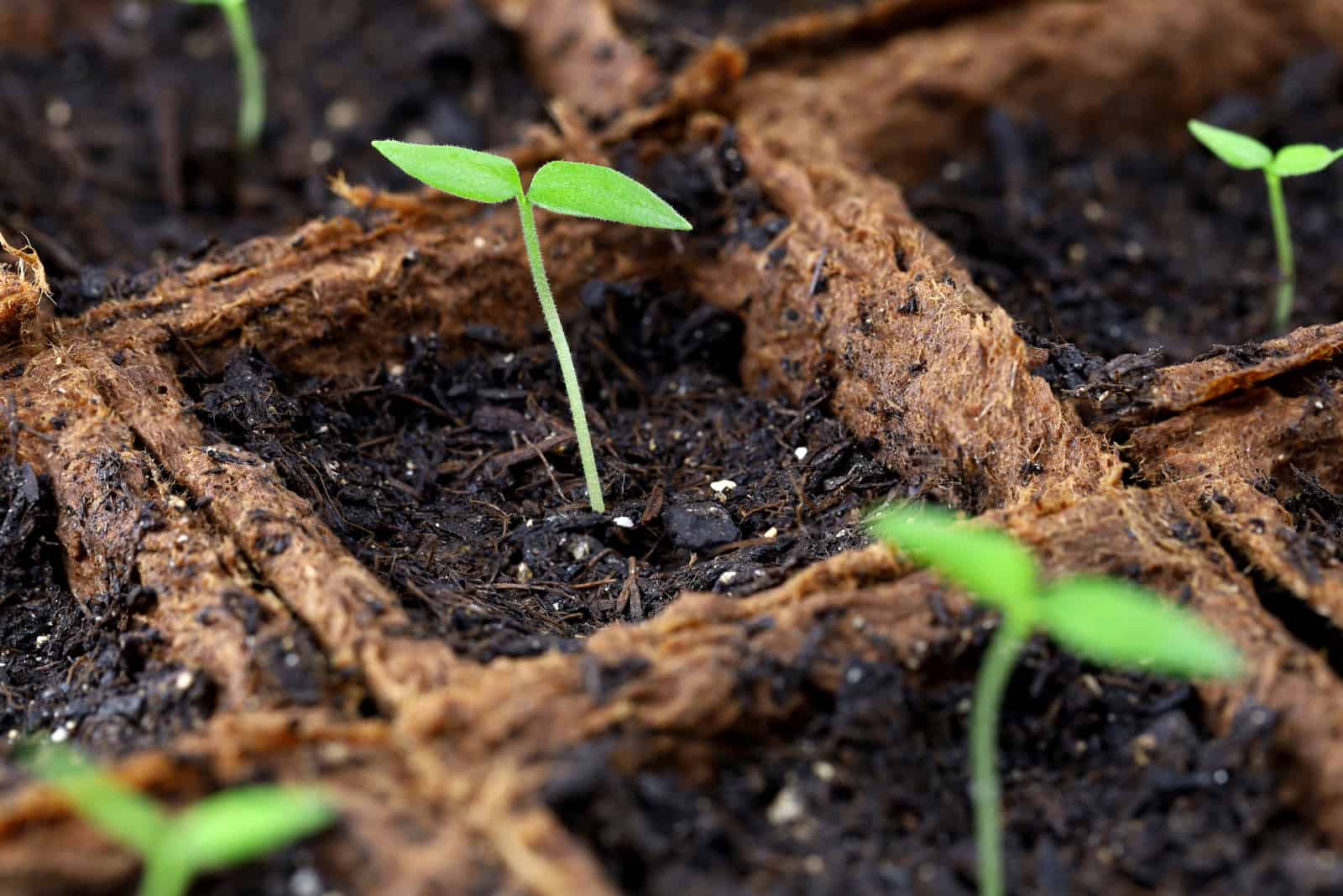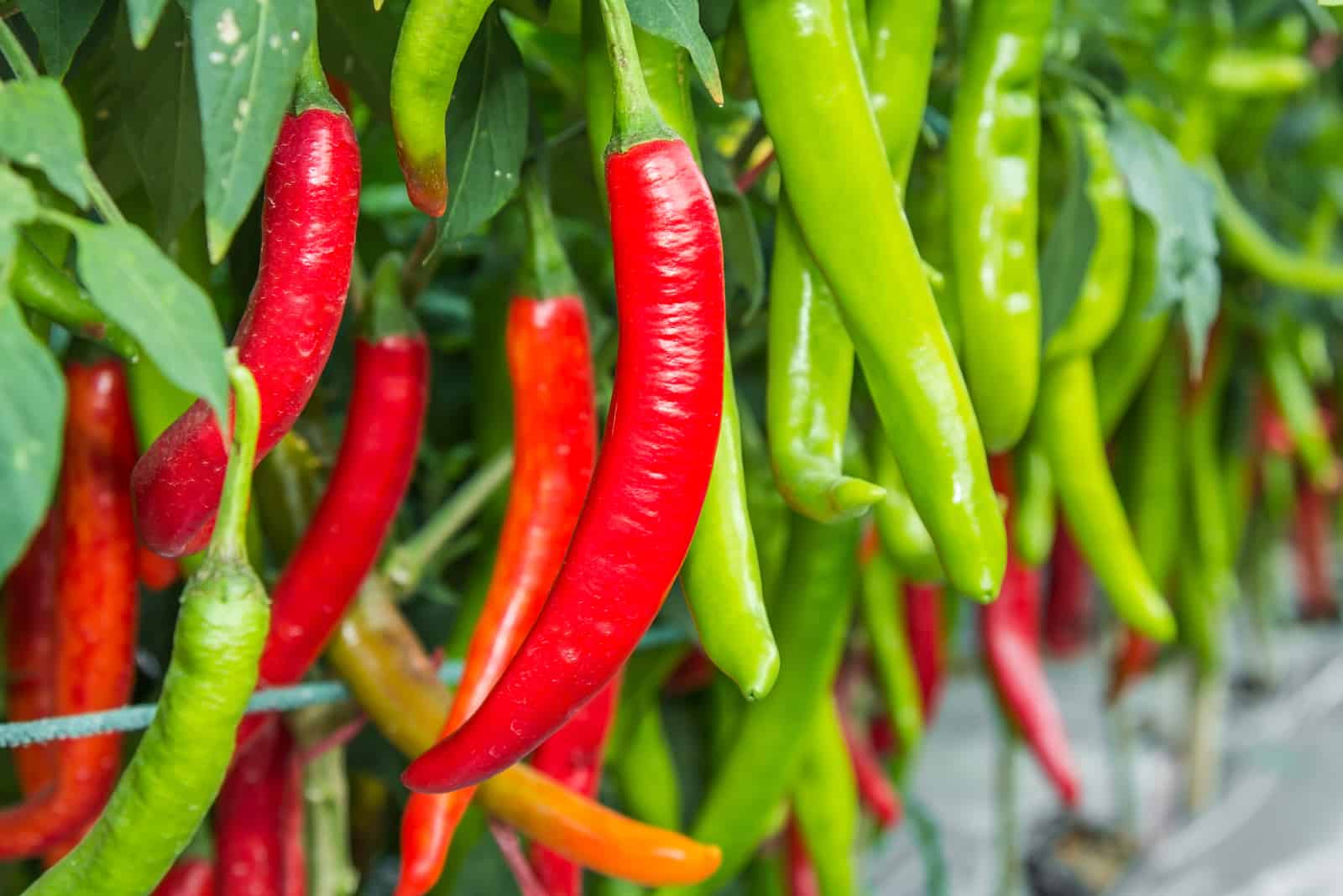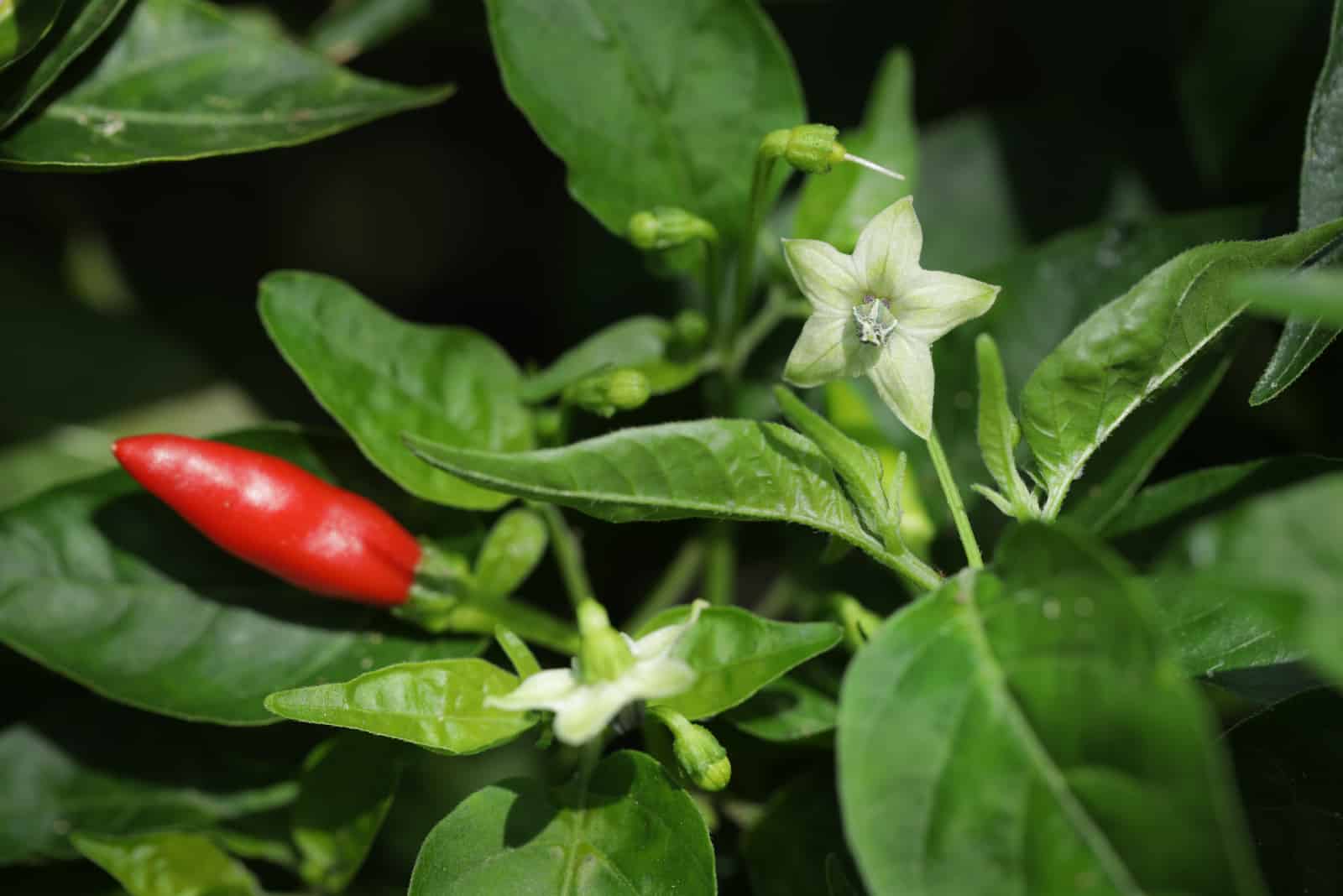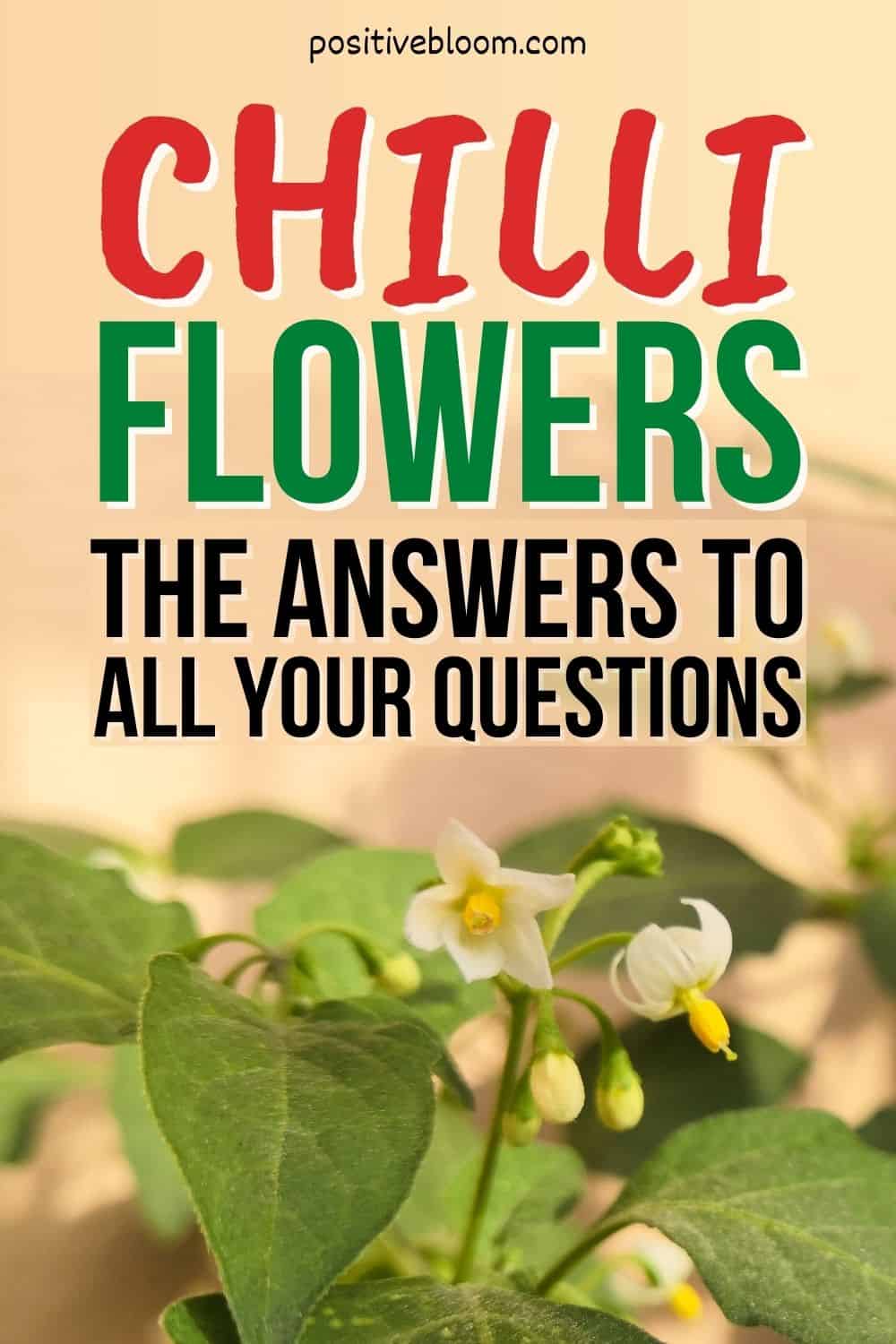We are all spicy food lovers here, and chilli peppers are some of the best spicy foods in the world! These amazing pepper plants can add so much depth and flavor, not to mention a kick, to every meal!
This article is primarily focused on chilli flowers, without which we would have no chili peppers. However, you will also find a care guide for growing hot peppers of your very own.
But first, some general specifics about hot peppers:
[table id=42 /]
There is something really enchanting about growing your own chili peppers, and knowing how they go from flower to fruit can truly help you improve your gardening skills.
Pollination is the key, and this article will teach you the most frequent pollination methods.
Flowers and pollination are essential for fruit production, so we will also go through some solutions to the most frequent problems with chilli flowers.
Let’s get started!
Chilli Flowers
All flowers differ in shape, size, and color, not just pepper flowers. However, there are certain things about pepper flowers that may surprise you.
Chilli flowers are the first step in the production of chilli fruit. Without the flowers, there would be no chilies.
The next section has everything you need to know about chilli flowers so you can nurture them into becoming vibrant red or yellow chilies.
Flowers On Chilli Plants: Type And Appearance
Chili flowers usually look like small, white stars, but they can also be different colors. Whatever the color, you shouldn’t pick these flowers as they are necessary for fruit production.
All pepper plant flowers are bisexual, which means that one flower contains both male and female parts.
The stamen is the male part, and it consists of anthers and filaments. Pollen needed for pollination can be found in the male part of the flower. The pistil is the female part. It consists of the ovary, which contains the seeds, stalk, and stigma, which is a tip that receives pollen.
Both the male and female parts are essential for pollination.
Pollination
Pollination is the reproductive process of the plant. As chilli plant flowers contain both male and female parts, they don’t need other plants for pollination.
However, if it does happen, it is not the end of the world. The following section explains the different pollination methods for chilli peppers.
Self-pollination
Peppers are self-pollinating flowers, which means they do not need wind or insects to become pollinated.
However, the male part sometimes doesn’t touch the female part, which leads to a flower that doesn’t set fruit. To prevent this from happening, you should use hand-pollination.
Hand-pollination
If you grow your chilli peppers indoors, you might need to put some extra effort into pollinating them. Sometimes, giving a gentle push can help, but other times you need to be more creative.
Take a small paintbrush or cotton swab and gently dab the pollen sockets. Then transfer the pollen to the female part of the flower and wait for the magic to happen.
It’s essential to pollinate plants properly because poor pollination leads to smaller fruit that doesn’t taste as good.
And if you need more help, here’s a video that will tell you all there is to know about pollinating chilli flowers.
Cross-pollination
Bees and other insects are vital for pollination if you grow your chilli peppers outdoors. They transfer the pollen from the stamen to the ovary and pollinate the plant.
Insects often visit the same plant more than once, which increases the chance of the plant producing fruit.
In cross-pollination, insects go from plant to plant and pollinate the flowers. There is nothing wrong with this, and your fruit would be the same as if you had hand-pollinated the flowers yourself.
Common Issues With Chilli Flowers
Chili peppers may experience certain issues that stop them from producing fruit. The best thing you can do is deal with these issues as soon as you notice them.
However, you should follow the care guide of yellow habaneros, serranos, jalapenos, or other chilis in order to have a good harvest.
Chilli Flowers Dropping Off
Flower drop may be a symptom of more serious underlying issues. However, it can also be due to high temperatures.
Extreme Heat
Chili peppers can tolerate extreme heat, but they do best in mild temperatures. Extremes cause blossom drop, and this means no fruit.
Over Watering
Another reason for flower drop is overwatering. Overwatering causes many issues, including root rot and blossom drop. Plant your chilies in a well-draining medium, and you shouldn’t have any problems with this.
Inconstant Humidity
Flower drop may also be caused by inconsistent humidity. Hot and sweet peppers have different humidity requirements, and different varieties of hot peppers have different needs. Humidity levels that are either too high or too low can compromise the pollen, and without pollen, there cannot be pollination.
Poor Pollination
Poor pollination is another thing that may cause flower drop. This can happen if you grow your peppers indoors, which is why you should always hand-pollinate chilies just to be sure.
Nitrogen
If the nitrogen level is too high and the phosphorus level is too low, it may lead to blossom drop. Nitrogen makes the plant grow larger at the expense of flowers. You should find a more balanced fertilizer that will feed your peppers properly.
Other Reasons
If none of these stressors appear to be causing the issue, other extremes such as windiness, the state of the plant before the transplant, and even too much or too little rain can also cause blossom drop.
It is essential to pay attention to the conditions in which your plant grows so that you know exactly what to address if the need arises.
Chilli Flowers With No Fruit
When you notice the flowers dropping off your plant, it isn’t necessarily a bad thing. When flowers start to drop, it’s usually a sign that the fruit is being produced.
However, sometimes the entire flower, not just petals, but stems and all, may drop. This is a sign that something is wrong.
The usual cases are extreme temperatures, overwatering, or poor pollination, and these problems are good because you can fix them.
You can avoid these issues if you time planting the chilies right. Try to get the time right so that they flower before the heat can hurt them. If you’re growing chilies indoors, you can take them outside in the morning so that the bees can do their job and thoroughly pollinate them for you.
The 5 Phases of a Chili Peppers’ Growth Cycle
There are five main growth stages of every jalapeno and habanero, whether you grow them indoors, vertically, or with the hydroponic method.
In this section, you will learn everything you need to know to take your chilli from seed to fruit.
1. Seed Germination
The first stage is seed germination. Chilli peppers need plenty of warmth to germinate, which is why you should start this process indoors where you can control the temperature.
You need to fill a pot with well-draining soil or compost, sow a couple of seeds on top, and then cover them with soil. The temperature should be between 65 and 75°F (18-24°C).
It usually takes between a week and a week and a half for the seeds to germinate. After successful germination, you only need to make sure that the plant is getting enough sunlight and that the soil is moist, but not wet.
2. Plant Growth
The second stage is plant growth. In this stage, you really will see the benefits of your hard work. After the first month, you should see leaves growing bigger and stronger, and by the second month, many other sets of leaves should appear.
This stage is the longest, and the plant changes every day. You will notice more leaves becoming larger, and after four months, you should see the first flower buds.
After that, new flowers won’t be an attraction anymore, but your inner farmer will be happy with each new bud.
After the flowers open, the plant passes into the next stage: pollination.
3. Pollination
The next stage is pollination. It is crucial to pollinate the flowers as soon as they open because non-pollination may lead to blossom drop and a lack of fruit.
Bees and other insects can help you with this, but you can always take a small brush and transfer the pollen manually.
4. Setting Fruit
After the chilli flowers are pollinated, they start to produce fruit. This is where the fun really begins!
You will notice small, green chilli fruit, which is the signal to immediately give your plant more attention. Expose it to enough sunlight and provide it with plenty of water so that the chilies are extra sweet, hot, and delicious.
5. Ripening Of The Fruit
The last stage is the ripening of the fruit. Every chilli fruit changes color from green to yellow or red. They may also stay green, as the change of color only signifies that the chlorophyll has started breaking.
It takes about 60-150 days for chilli peppers to fully mature. Sweeter varieties generally take less time, while hot peppers can sometimes take up to 150 days to fully mature.
Pro-tip: pick the peppers as soon as they are ripe because pepper plants can bear fruit up until the frost kills them.
Knowing when to pick ghost peppers, habaneros, and other chilli peppers is important since chillis produce fruit until they die, and harvesting the fruit as soon as it’s ripe, increases the yield.
Chilli Plants Care Guide
Now that you know what to be careful about, it‘s time to take a look at our care guide. You know that chilli flowers need to be pollinated in order to set fruit, but there are also specific requirements you need to meet if you want a big harvest.
Bell peppers, cayenne peppers, habaneros, and ghost peppers love plenty of sunlight and moisture. They also need a well-draining medium and some fertilizer to produce fruit.
However, this isn’t enough to grow enough peppers for hot sauces. The following section contains a more detailed care guide so you can maximise your harvest.
Light Requirements
Chilli peppers need full sun to grow their best. They can tolerate partial shade, but they won’t produce much fruit.
They need at least six to eight hours of sunlight every day, and if you can’t find a spot that can provide this much light, or if you have decided to grow your chilies indoors, you can always buy a set of grow lights.
How much time the peppers will spend under the grow lights depends on the type of grow lights you’re using, but it’s usually somewhere between 14 and 16 hours a day.
Water Requirements
Just like any other type of pepper, chilies love moisture. Whether you grow your chili peppers in an outside garden, a greenhouse, or in an indoor vegetable garden, never allow the soil to dry out completely!
This is especially important for chilies grown in pots or containers.
When you notice that the chilies have started growing, you should reduce watering because overwatering can lead to root rot and blossom drop.
To make sure that your plants receive enough water, you should water them regularly (every two or three days is perfect).
If you tend to forget to water your plants, don’t worry! Here’s a tip that will help both you and your plants!
You can mulch your garden using a plastic sheet or grass clippings. Mulching allows the soil to retain water and keeps the temperature just right.
Temperature And Humidity
Every grower knows that peppers love milder temperatures, and chilies are no exception.
Their ideal temperature ranges between 70 and 85°F (21-29°C). The chilli can tolerate temperatures higher than 90°F (32°C) for a short period of time, but they will not be productive if they are constantly exposed to extreme heat (or cold, for that matter).
The best way to control the heat is by growing these plants indoors or in greenhouses.
Most chilies are from hot arid climates, and they prefer those weather conditions. Humidity would impede the production of pollen and pollination, which is why it should be low to medium.
You should try to mimic the native conditions of your chilies.
Soil And Fertilizer
Chilli peppers need to be planted in a well-draining medium. They love soil that can give them plenty of nutrients and good air circulation.
Chilies love neutral or slightly acidic soil, with a pH level ranging between 6.2 and 7.0.
You can also add compost to your soil as this can enrich it with nutrients. However, be sure that the soil is well-draining because overwatering can quickly become an issue, and you may end up losing a good harvest.
Fertilizer
Nitrogen fertilizer is one of the best on the market for chili peppers. However, only apply this fertilizer in the early stages when you want the flowering plant to become strong.
After it starts producing flowers, change to a more balanced fertilizer that will give your pepper potassium and phosphorus. Potassium keeps diseases at bay, and phosphorus provides more energy to your plant.
You should also check the soil and see whether it needs other minerals, such as magnesium, iron, or calcium.
The key thing is to know when to stop fertilizing. Too much fertilizer can lead to fertilizer burn, which may result in the stunted growth of the plant.
To make sure that this doesn’t happen, you can apply the fertilizer after you transplant the pepper to its new home, and then twice a month after that.
Transplantation
It’s important to study the weather forecast when transplanting peppers. They hate the cold and cannot survive if the soil temperature is below 60°F (15°C).
To ensure that the transplant will take, you should only choose the strongest and healthiest plants. Plants with only a few leaves and weak stems will not survive the transplant. Always select “older” plants for transplant (6-8 weeks) that are not leggy, because plants like these almost always survive transplant shock.
But don’t wait too long! It’s too late for a transplant if you notice any chilli flowers on your peppers. These plants can survive, but the transplant may lead to flower drop.
After you pick the plants for transplant, prepare the soil. Always add extra food to the soil because chili peppers love soil rich in nutrients and organic material.
Now all that’s left is to gently take the pepper out of its container and place it in its new home.
Time Of Pruning
You can prune chili peppers at either the beginning or end of the season, and both pruning times have their benefits.
Pruning at the beginning of the season improves the growth of the plant and the quality of the chilli fruit.
On the other hand, pruning late in the season speeds up ripening and improves air circulation.
You can also extensively prune chilli peppers at the end of the season if you want to over-winter your peppers.
The basic rule of pruning in the early season is to cut off one branch so that the other can have all the energy and food to itself.
When pruning in the late season, cut off any stems that don’t bear fruit so that the productive branches have more energy, which will eventually speed up the ripening process.
If this is too much for you to take in, you can always watch a video below that will guide you through this process.
You Asked Us
Chilli flowers and chilli peppers are pretty interesting, and there is much more to them than we’ve already shared.
In this section, you will find the answers to some “unconventional” and frequently asked questions.
Are chilli flowers edible?
Some say that chilli flowers are edible, and others say they’re not. There is a possibility that these flowers contain toxins that can also be found in leaves.
However, you can boil the leaves to evaporate the toxins, and the same technique should work for the flowers too.
But, you can always pick a few flowers to decorate your salads without eating them.
What do chilli flowers taste like?
Chilli flowers have a floral (perfumey) taste, but it is best not to eat them as they might be slightly toxic.
They won’t kill you, but you might experience some stomach issues.
What does the color of chilli plant flowers mean?
If you notice that the white chilli flowers have turned yellow, it may be the result of malnutrition and under-watering. You will see slow growth in both cases, which is your cue to feed the plants and give them some water.
Also, not all chilli flowers are white. You can recognize the variety of your chilli plants based on the color of their flowers. Some have milky green flowers, some are white, while others are yellow or purple.
Study the color of the most famous and most common chilli peppers, and you will become a chilli expert in no time!
To Sum Up
In the end, we can conclude that there are many exciting things about chilli flowers! We now know that they are necessary for fruit production, that they have both male and female parts on one flower, and that they can self-pollinate.
We’ve also discussed the most common issues that may occur in your chilli flowers, as well as how to deal with them.
Now that you know the growth cycle of chilli peppers and how to take care of them, you can grow them without any doubts about how to achieve a rich harvest.
Good luck and until next time!
Like this post? Share or pin it for later!


